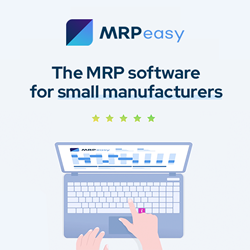Unlock Hidden Cash: How Manufacturers Can Maximize R&D Tax Credits Under the One Big Beautiful Bill
.jpg)
Innovation has always been the heartbeat of American manufacturing. From retooling production lines to adopting smart automation, today’s manufacturers are constantly refining how they operate and what they produce. But while companies are quick to invest in improvement, far too many are slow to capture the financial return that’s sitting just beneath the surface in the form of federal tax credits earmarked for research and development investments.
Thanks to the recent passage of the One Big Beautiful Bill (OBBB), manufacturers now have greater access to these credits. However, many still leave substantial dollars on the table because they are not aware of their eligibility or fail to grasp the qualification and filing requirements.
For manufacturers operating on thin margins and managing capital-intensive operations, the R&D credit isn’t just a tax break, it’s a tool for cash flow, reinvestment, and long-term success.
What is the R&D Credit, and Why Now?
The federal R&D tax credit was designed to encourage any U.S. company to invest in technological innovation. This is especially valuable for manufacturers because “R&D” in this context doesn’t mean academic research or lab work. It means real-world problem-solving on the shop floor.
If the staff is improving an operational workflow or process, refining a product, prototyping tooling, or customizing components to meet customer specs, any of these activities can be eligible for a credit.
What’s changed under the OBBB is the ease with which businesses can recover R&D expenses. The OBBB reverses the 2017 Tax Cuts and Jobs Act requirement that R&D expenses are to be capitalized and amortized over five years, restoring the ability to directly expense these costs. Furthermore, these benefits can be applied retroactively to tax filings from 2022 – 2024 via a catch-up deduction, amending returns, or accelerating the remaining amortization. The IRS is expected to issue new guidance that helps companies document and defend their claims more confidently.
This means that even modest investments in process improvement or product development could yield tens or even hundreds of thousands of dollars in annual tax savings via relatively straightforward tax policy.
What Qualifies as R&D in Manufacturing?
The IRS uses a four-part test to determine eligibility. Qualifying work must:
- Have a permitted purpose, such as improving a product or process
- Be technological in nature — relying on physical sciences, engineering, or computer science
- Seek to eliminate technical uncertainty
- Follow a process of experimentation, such as modeling, testing, or prototyping.
In a manufacturing context, this includes a broad range of common projects, processes, and productivity initiatives. For example, developing new molds, dies, or fixtures; prototyping or testing new product configurations; implementing or refining automation solutions; redesigning workflow to reduce defects or increase throughput; or evaluating material substitutions or engineering tolerances. Even failed attempts count — it’s the effort to innovate that matters.
How Much Money is at Stake?
Depending on the qualified research expenses (QREs), the federal credit can range from 6 percent to 8 percent of these costs. The benefit can grow even larger when it is combined with state-level incentives. As an illustration, states including Massachusetts, New York, and California have generous programs that can be stacked with the federal incentives. Eligible costs include wages, materials, and a portion of contractor fees related to qualifying R&D efforts. Some manufacturers recover $50,000 to over $250,000 per year, and unused credits can carry forward to future years.
Stronger Documentation Standards — and Smarter Strategies
One important shift under the new provisions is the emphasis on documentation. While the credit has become more generous, it also demands more rigor.
The IRS expects:
- Clear project descriptions with technical objectives
- Timesheets or labor allocations tied to qualifying work
- Cost detail by project
- Supporting materials like test results, design iterations, or meeting notes
That might sound burdensome — but many ERP systems and production management tools already capture much of this information. With proper tax and financial guidance, manufacturers can integrate documentation into existing workflows to streamline the process.
Why This Matters Now
Working capital is king in today’s tumultuous economic environment, marked by international supply chain volatility, inflationary pressure, and labor constraints. The R&D credit offers a non-disruptive path to improved cash flow — without cutting headcount, slashing investment, or taking on debt.
It also rewards the work that is already being conducted. Manufacturers often tell us, “We didn’t think that counted as R&D.” But when we walk through their processes — from design engineering to tooling trials — the qualifying activities are everywhere.
The Payoff: Manufacturers Can Self-Fund Their Innovation
Staying competitive means constantly pushing forward, but this takes capital. The R&D tax credit is a rare opportunity for a manufacturer to unearth capital simply through ambition and ingenuity.
Whether positioning the company for growth, preparing for an ownership transition, or simply navigating today’s economic headwinds, reclaiming these dollars makes a difference. And in many cases, businesses can claim credits retroactively for three previous tax years.
Take the Next Step
The first step is a professional R&D credit study — ideally from a firm that understands both tax code and manufacturing operations. A good advisor will help:
- Identify and quantify activities
- Build defensible documentation
- Maximize both federal and state-level credits
For manufacturers that have recently invested in better processes, products, or technologies, or are about to, there’s likely money waiting to be claimed.
Mike Sibley, CPA, is a partner with James Moore & Co. and is the leader of the firm’s Manufacturing Services Team. He works with manufacturers to improve profitability, optimize cash flow, and take advantage of tax credits and incentives. Learn more at jmco.com/industries/manufacturing/.
Featured Product

